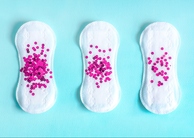The Desperate Drive for Perfection: Changing Beauty Ideals and Women's Fashion in the 1920s
By
2015, Vol. 7 No. 02 | pg. 1/2 | »
KEYWORDS:
American life in the early twentieth century was marked by a culmination of changes that had been brewing since the end of the Civil War. One of the areas of everyday life that saw a major shift was women's fashion: the fashions of the 1920s made a decisive change toward self-expression and led to growing popularity of the more comfortable and revealing attire sported by the quintessential “New Woman” of the decade. Body ideals shifted to center on an idealized slimmer figure, leading to the popularization of various products and methods to reach this goal. The media began to play a huge role in perpetuating new ideals as films, literature, and advertising continually revered the attractive, youthful stars of Hollywood. The media also propagated the quintessential woman as inflexibly “American” in her appearance, leaving no room for deviation, defect, or even old age. Beauty became essential to a woman, making her appearance an especially important aspect of her social and professional standing. When commercial products did not achieve the desired goals, some turned to the emerging specialty of cosmetic surgery to reach their stringent standards of perfection. As the twentieth century experienced an unprecedented obsession with vanity, various new methods and products were used to combat aging and 'plainness,' eventually resulting in the use of cosmetic surgery by women desperately seeking to transform their appearance. 
Top: Cover of 1928 edition of McCall Quarterly, a popular American women's magazine. Bottom: An example of the type of wildly exaggerated promises that some products made, sush as fat reducing soap. Beginning in the last decade of the nineteenth century, “a radically different perspective on gender, race, and culture emerged.”1 The period immediately following World War I was similarly consequential because it beckoned in a time of previously unknown excess and freedom for the American people. As the bloodshed of the Great War came to a close, the country’s focus turned to the various social changes occurring at home. The relatively simple life remembered by the previous generation was gone completely, and it was replaced by a new and changing world. Climaxing in the 1920s, women’s roles and beliefs were changing, as well as their concerns.2 Society placed an unprecedented pressure on women to be successful, and the result was a preoccupation with beauty that came to dominate nearly every aspect of a woman’s life. In the fiercely competitive and unforgiving world of the 1920s, a woman’s appearance was inextricably linked with her success in both social and professional circles. A woman wanting to get ahead in life needed to use her looks to move up. In Venus Envy, Haiken illustrates this point with examples of magazines urging women to improve their appearances. Readers were reminded that “people who pass [them] on the street can’t know that [they’re] clever and charming unless [they] look it.”3 Louise Klein Miller reminded women in her article “Dress Well—It’s Good Business” that “personal appearance is one of the greatest assets for a personal career.”4 If a woman does not meet the accepted standards of beauty, Miller argues, she risks being looked over for a position that she may very well deserve.5 Looks were also a significant factor for those seeking a mate. As beauty overruled virtually every other quality a woman might possess, the media warned that a woman must be pretty or risk losing a potential husband. Attractiveness had become “the central component of a woman’s ability to attract a man.”6 The growing emphasis on a woman’s appearance left no room for error if she desired to move ahead in her social or professional life.7 The turn of the century was also notable for the end to the Victorian mores against vanity and narcissism. Generations of the nineteenth century grew up believing that self-improvement was a task for the soul and that inner beauty was the only beauty that mattered. Anyone paying too much attention to his or her appearance was judged to be ostentatious and frivolous. By the 1920s, however, it was considered careless and unseemly to neglect your appearance.8 Physical beauty had become the responsibility of every woman that expected to gain success in this new world. The world had become so fast-paced and competitive that there was no room for women unable to meet these raised standards.9 Prior to the twentieth century, “big noses, small breasts, wrinkles of all sizes” and various other imperfections were “simply facts of life.”10 An unattractive figure was easily hidden beneath the layers of clothing women typically donned. But as the 1920s discarded the corset and concealing dresses and greater value was put on a woman’s appearance, a woman’s body was more or less on full display for the critical outsider’s eye.11 In this “unforgiving culture of modern America,” women unable to meet these excessive standards of beauty were left desperately seeking a means to go unnoticed.12 Carolyn Comiskey writes in her article “Cosmetic Surgery in Paris in 1926: The Case of the Amputated Leg” that the 1920s saw an end to the many beauty standards that had been popular in earlier generations. In previous generations, the archetypal woman possessed wide hips and a full bosom, features symbolizing motherhood and maturity.13 If they did not enjoy “voluptuous heaviness,” then “delicate invalidism” was also desired as it “symbolized female weakness.”14 There was no single beauty ideal a woman could strive for before World War I, and the 1920s marked the predominance of slimness over all other body types.15 The curvy, fleshy bodies of women were deemed undesirable by those striving for the slim figures that had become an obsession for much of society. Beauty and femininity of the 1920s came to be equated with “a very small bust, a stick-like figure, and long legs.”16 National Business Woman told its readers that naturally lovely hair and skin were inconsequential when compared to the contours of the body, placing unprecedented pressure on women to alter their bodies to meet such standards.17 The cultural obsession with slim figures in turn brought about a new obsession with physical fitness to achieve such results. Women undertook body projects as a means of attaining “beauty, approval, and self-worth.”18 The turn of the century saw the rapid institutionalization and commercialization of physical activities across the country.19 Schools began to offer physical education classes as well as sports teams to learn the value of exercise. Recreational exercise, such as golf and tennis, became more common and even considered high class with the growing popularity of athletic clubs and various associations as the Young Women’s Christian Association (YWCA) or Young Women’s Hebrew Association (YWHA).20 Articles in newspapers and magazines such as Woman’s Journal urged women to adopt hobbies that would provide the exertion necessary for the perfect feminine figure.21 Women were told that action was the key to achieving the toned figures that were so valued among the Grecian societies. Movement and flexibility were the most effective means to escape the “human monstrosity” of an unfit shape.22 Activities such as biking or dancing were recommended, as was anything that would “build muscular activity into the very foundation of daily life.” 23 Exercise was also essential for the grace and poise it afforded to those that found themselves lacking. The New Woman was an elegant creature that entered a room with confidence and serenity. Through dancing or swimming or any other type of activity, she was able to overcome her teenage awkwardness and master her clumsy features. Articles even discussed specific exercises aimed at correcting various problems, such as fat ankles or an unpleasantly flat bust.24 This movement toward physical fitness is notable for the unprecedented pressure it placed on women to fight the inescapable facts of life, such as aging and childbirth, and accept their new responsibility of remaining physically attractive.25 The radical changes in women’s fashion helped to further emphasize the shifting body ideals of the 1920s. Women’s bodies were no longer hidden under layers of clothing but were left visible to the public. The rigid corset that had enjoyed such popularity in the nineteenth century had been replaced by the more forgiving elasticized girdle. The hem line rose to the knee, exposing the legs for the first time. Fashion became a “tyrannical goddess” in its power over women.26 National Business Woman enlightened women of their “duty to dress as well and as becomingly as possible.”27 Schools and colleges commonly offered courses on the elements of dressmaking and design to ensure that women were able to dress sensibly as well as display individuality. Women were instructed to be meticulous when selecting colors, textures, and styles of their outfits. A woman’s appearance was a direct reflection of her character and status, and should therefore be guarded religiously.28 The increasing pressure of maintaining one’s appearance was inescapable as methods and products were constantly advertised to aid women in their quest for beauty. The New Woman of the 1920s “symbolized perfect blends of fitness and femininity, health and virtue, service and self-improvement.”29 Self-improvement was not limited to a woman’s fashion. Diets soared in popularity among women anxiously monitoring their figures.30 Women were bombarded by advertisements instructing them how to manipulate what they had been born with. Magazines and journals ran articles educating women on which hats were more suited for their faces, as well as how to style one’s hair to emphasize some features while concealing others.31 Various products were recommended for their rejuvenating powers. Ambrosia was advertised in Club Women of New York for its ability to perfect one’s uneven complexion.32 International Women’s News promoted fragrances that would bring women “admiration and lasting popularity.”33 Products such as “reducing belts” and “slimming baths” were also recommended for the effects they would have on a woman’s body.34 All of these methods of self-improvement assisted middle class women in their transition from middle class American women to the New Woman of the 1920s.35 In the 1920s, as the media flourished and overwhelmed the mass culture, there was no escaping the beauty standards displayed by magazines and movies. People flocked to movie theaters, spending more money there than any other recreational activity.36 The “spectacular moving images of elegant bodies, romantic interludes, and extravagant living standards” portrayed in films intoxicated Americans desperately wishing to live that fantasy.37 Motion pictures and advertisements had become engrained in the lives of Americans, rendering them an authority over what constituted beauty.38 After stars such as Clara Bow and Vilma Banky portrayed the infamous flapper, fans began reproducing this style at home.39 The growing popularity of movies established Hollywood “not only as a center of film production, but also as a cultural institution that valued” beauty above all else.40 Middle-class Americans viewed Hollywood as an enigmatic place full of alluring gods and goddesses.41 As motion pictures soared in popularity, fan magazines and advertisements propelled the Hollywood stars into women’s homes, depicting them as models for middle-class women to live up to.42 The lovely faces of Hollywood’s young stars littered pages of magazines and building walls, reminding women to check their appearances. This assault of attractive idols served as a warning. Somewhere in this modern visual culture, good looks had transitioned from a convenience to a necessity.43 Hollywood and its movies were not the only peddlers of the doctrine of beauty before all else. Advertisements and literature helped propagate the beauty standards as well.44 The dominant beauty ideal of the 1920s was summed up as the New Woman. She was independent, modern, and most importantly, attractive.45 Estelle Freedman characterizes the New Woman as sensibly fashionable with her “shorter skirts, more comfortable undergarments, shorter hair, [and] the use of cosmetics.”46 Louise Klein Miller further emphasized her practical fashion sense in her article “Dress Well—It’s Good Business.” In the article, Miller states that a woman’s wardrobe is what elevates her to sophistication and style. As she carefully selected each article of clothing, a distinguished woman never has to worry that she is improperly dressed for any occasion.47 Advertisements cautioned women that “first impressions could bring immediate success or failure.”48 They implied that the only thing needed to ensure a good impression was whatever product they were advertising. Various cosmetics, soaps, and countless other products were endorsed for the impact they would make on other people’s perceptions of an individual. Slim, engaging models smiled up at women from magazine pages, urging them to choose the right frock or skin cream.49 Literature further reiterated the evolving trends of the 1920s. Rather than reproduce stories of vulnerable beauties in need of rescue, stories introduced the New Woman to the literary world. This New Woman did not become hysterical during a crisis; she maintained her composure and searched for a resolution to any problem.50 Her pragmatic sensibility was symbolized by her bobbed hair, tweed suits, and low-heeled shoes.51 Famous authors such as F. Scott Fitzgerald helped to circulate the embodiment of the New Woman and the Flapper with novels about modern girls “with an extraordinary talent for living.”52 The qualities and traits a woman of the 1920s needed to be deemed worthy and attractive were widely circulated by the movies and advertisements. Acting as “cultural gate keepers,” the media in its many forms explicitly communicated to women the standards of beauty as well as the means of achieving them through various products.53 Individuals, women in particular, also anxiously looked for methods to attain the “normal” features associated with Western characteristics. The soaring popularity of the movies in the 1920s explicitly communicated to women what qualities were needed to be considered beautiful. The overwhelming message of the 1920s was “that beauty meant the absence of the clear signs of race or ethnicity.”54 As young women of varying ethnicities looked upon the films and magazines of the time, they too endeavored to possess this quality.55 One of the most famous examples of a person going to great lengths to embody the Western principles of beauty is Fanny Brice. Of Jewish ancestry, Brice was already quite famous in 1923 when she enlisted a surgeon to reshape her nose. Although she fervently denied the procedure was intended to make her “look less Jewish,” the surgery did succeed in making her look much more like the other starlets of the day.56 Those unwilling or unable to undergo a cosmetic procedure sought Western beauty by other means. Women adopted the same hairstyles, fashion, and cosmetics of those deemed the most beautiful in American culture.57 The strict code of beauty that had predominated 1920s America left little room for women to stray.58Continued on Next Page » Suggested Reading from Inquiries Journal
Inquiries Journal provides undergraduate and graduate students around the world a platform for the wide dissemination of academic work over a range of core disciplines. Representing the work of students from hundreds of institutions around the globe, Inquiries Journal's large database of academic articles is completely free. Learn more | Blog | Submit Latest in Women's & Gender Studies |













